| Columns Retired Columns & Blogs |
Sonic Frontiers SFD-2 D/A processor Mk.II Measurements
Sidebar 8: Mk.II Measurements
The SFD-2 Mk.II's maximum output level was 3.15V from the balanced outputs, 1.57V from the unbalanced outputs—rather low levels. In fact, the Mk.II has about half the output voltage of the original SFD-2. This is no doubt due to the 6dB of gain-reduction required by the HDCD license when playing non-encoded signals (see "The PMD100 HDCD Decoder" Sidebar).
Output impedance measured at the balanced jacks was 365 ohms at 1kHz and above, increasing to 1350 ohms at 20Hz. Although these are moderately high values, the Mk.II's output impedance is significantly lower than that of the SFD-2, which measured 735 ohms over most of the band, and a whopping 8k ohms at 20Hz. In fact, the original SFD-2 became current-limited when driving a 600 ohm load. The Mk.II's lower output impedance is the result of the larger output coupling capacitors—10µF compared to 3µF. The unbalanced output impedance was 178 ohms at 1kHz and above, and 550 ohms at 20Hz. Although probably not a good candidate for use with a passive level control, the Mk.II's lower output impedance should allow it to work better into lowish-input-impedance preamps (those with a 10k ohm input impedance). In my review of the SFD-2, I cautioned prospective buyers that a high-input-impedance preamp was required to get the best performance from the unit. I have no such concerns about the SFD-2 Mk.II.
DC levels were very low, measuring just 0.2mV (left) and 0.1mV (right) from the balanced outputs, and half those values from the single-ended jacks. The Mk.II had no trouble locking to 32kHz or 48kHz data inputs, and the unit doesn't invert absolute polarity unless the front-panel polarity switch is engaged.
Fig.1 shows the Mk.II's frequency response and de-emphasis error. Note that the SFD-2 Mk.II starts rolling off at a lower frequency than did the Mk.I, resulting in 0.25dB of attenuation at 20kHz. The de-emphasis circuit produces a negligible 0.1dB positive error over the band between 1kHz and 20kHz, which will produce a very slightly brighter sound on CDs that have been recorded with pre-emphasis. (Although the error is only 0.1dB, it spans more than four octaves of bandwidth, increasing its audibility.)
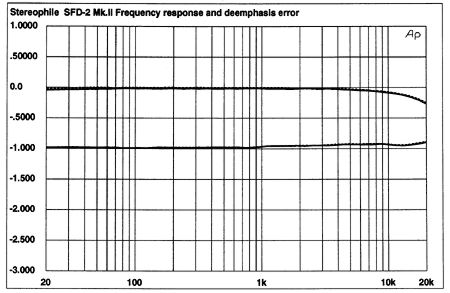
Fig.1 Sonic Frontiers SFD-2 Mk.II, frequency response (top) and de-emphasis error (bottom) (right channel dashed, 0.5dB/vertical div.).
The Mk.II's channel separation (fig.2) was excellent, measuring greater than 110dB at 1kHz—this is about a 6dB improvement over the SFD-2. There's a degree of capacitive coupling between channels, resulting in the 6dB/octave increase in crosstalk as frequency increases. This is good performance by any standard, but particularly good considering that both analog output stages are right next to each other on the same pcb.
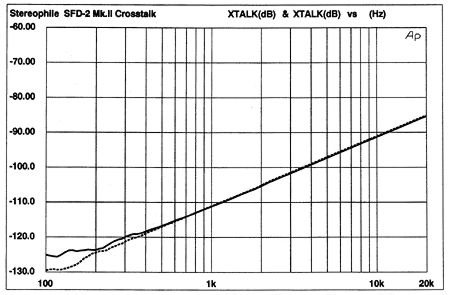
Fig.2 Sonic Frontiers SFD-2 Mk.II, crosstalk R-L (L-R dashed, 10dB/vertical div.).
Fig.3 is a spectral analysis of the Mk.II's output when decoding a 1kHz, -90dB dithered sinewave. The noise level is low, and the DACs are performing well, but you can see a trace of 60Hz power-supply noise in the right channel (the peak in the dotted trace at 60Hz). Interestingly, this trace—including the right-channel noise—looks nearly identical to that of the SFD-2. Note, however, that the noise is down 120dB referenced to full-scale, and thus inaudible. The same type of spectral analysis made over a wider bandwidth (200kHz) and with an input signal of all zeros produced the plot of fig.4. Note the filter's rapid attenuation just above the audioband, accompanied by unusual energy peaks at 31kHz (right channel) and 63kHz (both channels). The trace is free from artifacts, but again you can see that smidgen of 60Hz right-channel noise.
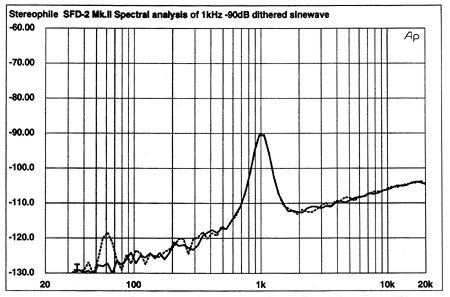
Fig.3 Sonic Frontiers SFD-2 Mk.II, spectrum of dithered 1kHz tone at -90.31dBFS, with noise and spuriae (1/3-octave analysis, right channel dashed).
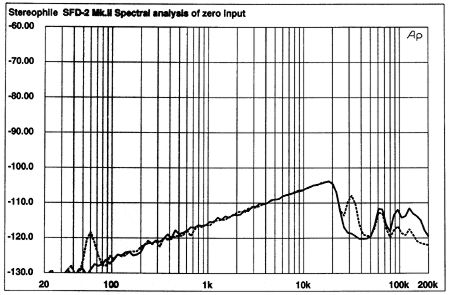
Fig.4 Sonic Frontiers SFD-2 Mk.II, spectrum of digital silence, with noise and spuriae (1/3-octave analysis, right channel dashed).
As you'd expect from the UltraAnalog DACs used in the Mk.II, linearity was superb (fig.5). The DACs are good to below -100dB. Note also the very low noise level; many linearity plots are swamped by high levels of noise below -100dB. This is even more remarkable for a processor with a tubed output stage. The Mk.II's reproduction of a 1kHz, -90dB undithered sinewave (fig.6) was unlike any I'd seen from a digital processor. Instead of seeing the three quantization steps at this level (0, +1, -1), it looks as if this -90dB signal is being reproduced with much higher resolution.
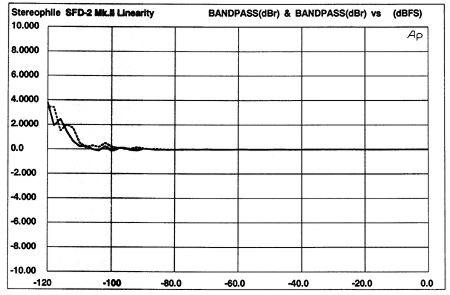
Fig.5 Sonic Frontiers SFD-2 Mk.II, departure from linearity (right channel dashed, 2dB/vertical div.).
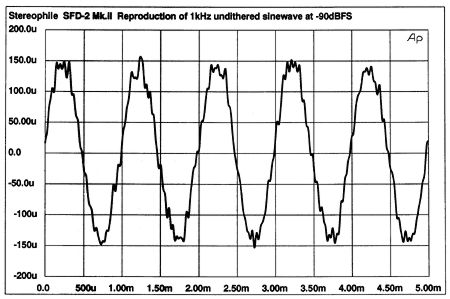
Fig.6 Sonic Frontiers SFD-2 Mk.II, waveform of undithered 1kHz sinewave at -90.31dBFS (24-bit word length).
I checked that the Audio Precision's digital waveform generator was set to -90dB, that the dither was turned off, and measured the analog output as being exactly 90dB below full scale. This signal was confirmed as being indeed -90dB in level—90dB as an undithered digital signal at the input, and -90dB below full scale as an analog signal at the output.
The reason for this difference is that the PMD100 filter is used in the SFD-2 Mk.II in a mode called "left justified," which automatically accommodates whatever word length is input to the decoder. The Audio Precision System One's digital signal generator defaults to the 24-bit mode unless programmed otherwise, which hasn't been a factor in our previous measurements of processors using other filter chips. Reprogramming the Audio Precision to output 16-bit undithered words gave the result shown in fig.7. The discrete levels can be easily seen, correctly reproduced as a stepped waveform.
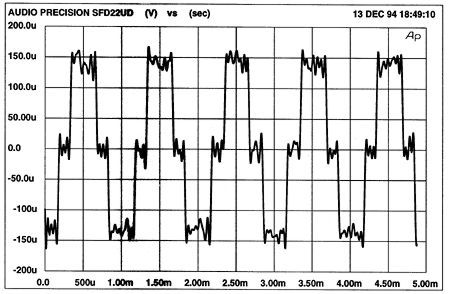
Fig.7 Sonic Frontiers SFD-2 Mk.II, waveform of undithered 1kHz sinewave at -90.31dBFS (16-bit word length).
The tight trace-groupings in the Mk.II's noise-modulation graph (not shown) indicate that the Mk.II's noise floor doesn't shift in amplitude or in spectral balance with changing input level. The Mk.II's intermodulation spectrum (fig.8) reveals very few IM products, with the 1kHz difference component below -90dB. The IMD spectrum measured from the single-ended outputs showed a slightly higher level of the 1kHz difference component. The original SFD-2 had much higher IMD from the single-ended outputs; the Mk.II had only slightly higher distortion.
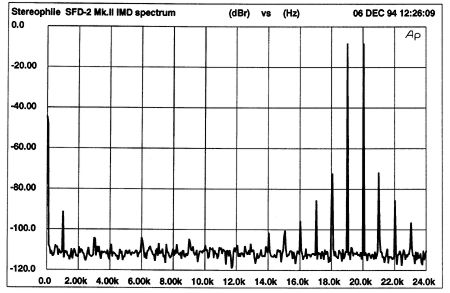
Fig.8 Sonic Frontiers SFD-2 Mk.II, HF intermodulation spectrum, DC-22kHz, 19+20kHz at 0dBFS (linear frequency scale, 20dB/vertical div.).
Looking next at the SFD-2 Mk.II's word-clock jitter, I measured an RMS level (over a 400Hz-22kHz bandwidth) of just 36 picoseconds—an extremely low jitter level. In fact, the Mk.II's RMS jitter level is nearly an order of magnitude better than that of the SFD-2. This measurement was made with the PS Audio Lambda transport as a source, and a 1kHz, full-scale input signal. The jitter is the more benign random jitter, indicated by the relatively smooth trace (not shown). Jitter with strong periodic components produces spikes in the trace, which are much more sonically annoying. There is, however, a trace of periodic jitter at 2kHz.
With a test signal of all zeros, the jitter spectrum was perfectly clean (not shown), and the RMS value dropped slightly. When the Mk.II was driven by a 1kHz, -90dB sinewave, the RMS jitter level increased (as expected) to 125ps, and the spectrum (fig.9) showed some signal-correlated jitter, seen as the spikes at 1kHz and 2kHz. Overall, the SFD-2's jitter performance was exemplary.
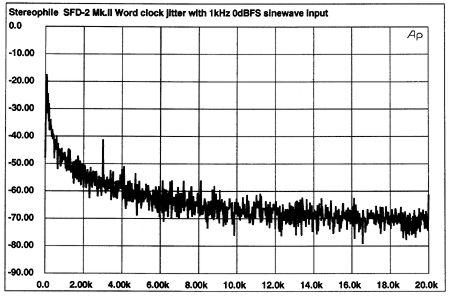
Fig.9 Sonic Frontiers SFD-2 Mk.II, word-clock jitter spectrum, DC-20kHz, when processing 1kHz sinewave at -90dBFS (linear frequency scale, 10dB/vertical div., 0dB=1ns).
These jitter measurements were made on the PMD100 HDCD decoder's 8x-oversampling word-clock output at the decoder chip itself (pins on the UltraAnalog DAC are inaccessible from the top of the board). Similarly, I had measured the original SFD-2's word-clock jitter on the 8x-oversampling word clock on the NPC filter chip. This nearly tenfold reduction in measured jitter in the Mk.II may be largely due to the PMD100. Although the Mk.II has a lower jitter layout and a specially selected UltraAnalog AES21 input receiver, the limiting factor in the SFD-2's jitter performance may have been the NPC filter chip, which outputs the 8x-oversampling clock that controls the DAC. If that's the case, we may be in for a wholesale reduction in clock jitter in many processors—provided the designers did everything else right.
On a technical basis, the SFD-2 Mk.II outperforms its predecessor. The new model's measurements suggest that the Mk.II offers not only better sound quality, but better technical performance as well.—Robert Harley
- Log in or register to post comments




































